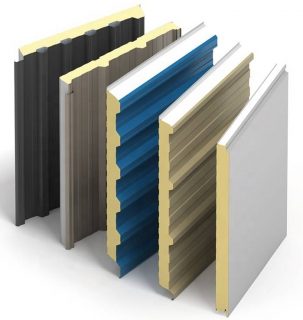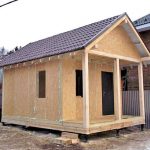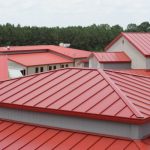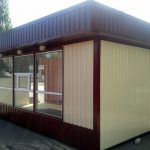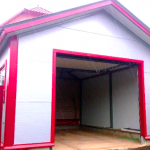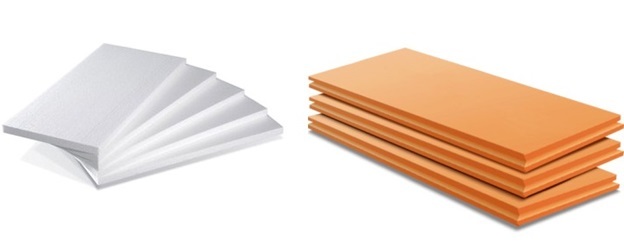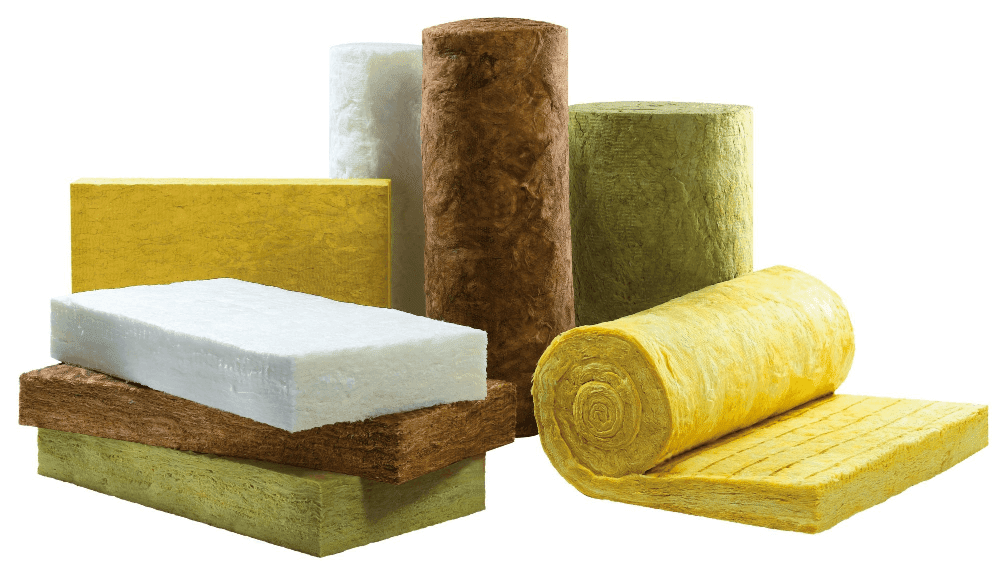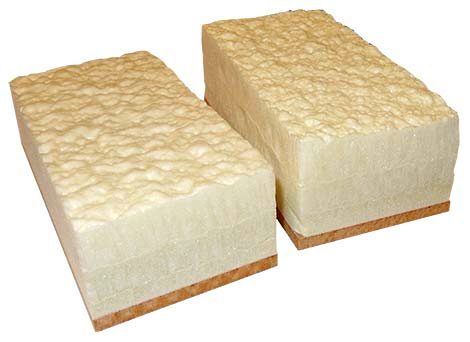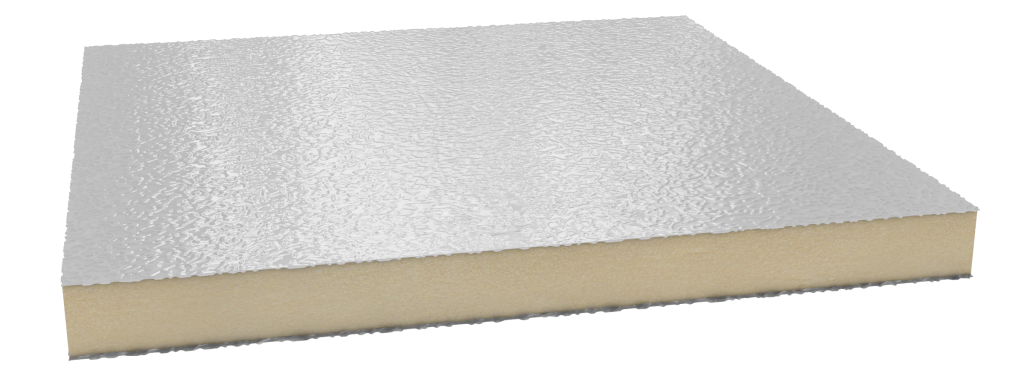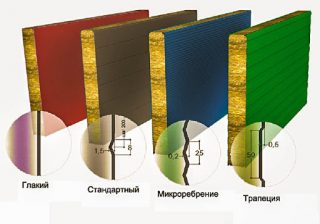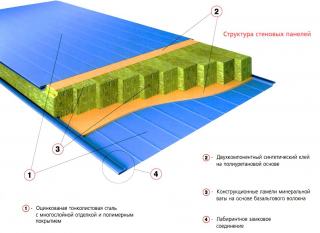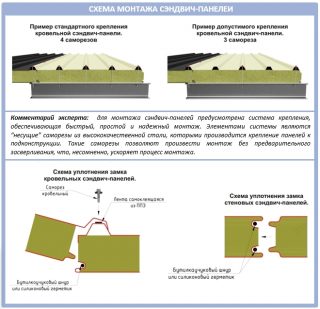Thermal sandwich panels are a versatile durable building material. With its help, you can clad the building from the outside, at the same time insulate the room. The general principle of creating panels is as follows: 2 metal sheets, between which there is a layer of insulation.
Description of sandwich panels
Polyisocyanurate is resistant to ultraviolet radiation, chemical aggressive substances, does not burn. The material is not cheap, but it surpasses all known counterparts in most of its characteristics. It is used for the construction of external walls of a building or their cladding.
Aluminum or steel sheets are used to fasten the insulation on both sides. Chipboard, hardboard, plastic, OSB plates are also used as load-bearing structures.
The advantages and disadvantages of sandwich panels depend on what material they are made of, as well as whether the panels correspond to their purpose described in the instructions.
Before starting construction, it is necessary to make a project to determine how this material is suitable for the job. It is necessary to carry out the installation of panels in compliance with the rules, otherwise the building will not be durable.
Scope of application
Sandwich panels are suitable for construction technical and utility rooms, as well as country housesnot intended for permanent residence. It is profitable to build trading stalls or pavilions, warehouses or hangars, since the process is fast, and there is no need to use heavy equipment. For private houses, a more durable material is used, or it is necessary to strengthen the structure with a frame - wood or metal.
From SIP panels build two- and even three-story buildings on a metal frame. SIPs are a material that belongs to the type of sandwich panels, but is more suitable for the construction of residential premises. OSB plates are taken as a basis.This direction is distinguished by increased thermal insulation properties. Usually SIP panels are made to order, depending on the project. This further speeds up the installation process.
Depending on the region and average annual temperatures, it is necessary correctly select the thickness of the insulation between the carrier sheets. Typically, in the middle lane, slabs with a thickness of 100 to 200 mm are used.
The project is carried out in such a way that, if necessary, it would be possible to complete another floor from above, as well as quickly dismantle the structure and take it to another place.
Material specifications
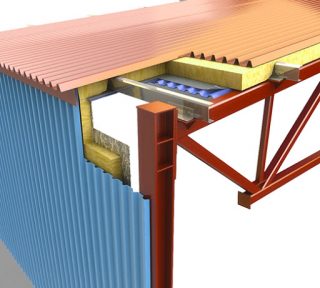
Depending on the purpose - wall or roof - panels differ in technical characteristics. For the wall, the indicators of thermal conductivity, strength and fire safety come to the fore. For roofing, the primary indicators are load-bearing capacity, resistance to precipitation and other weather conditions.
For the roof, special panels with stiffening ribs are used to provide the necessary strength.
Energy saving properties of panels depend on the type of filler, lock configuration, ensuring the joining of the panels, the presence of a seal between the parts.
The most important indicator is thermal resistance - depends on the heat loss in the lock, the quality and thickness of the filler.
Thermal resistance table at 25 degrees.
| Panel thickness | Thermal resistance for polyurethane foam | Thermal resistance for mineral wool |
| 40 | 1,9 | — |
| 60 | 2,8 | — |
| 80 | 3,7 | 2,1 |
| 100 | 4,5 | 2,6 |
| 120 | 5,5 | 3,1 |
| 140 | 6,3 | 3,5 |
| 160 | 7,1 | 4,1 |
| 180 | 8,3 | 4,5 |
| 200 | 9,0 | 5,0 |
Plates, the thermal resistance of which does not fit into these parameters, are not recommended for use in the construction of residential premises.
It has special properties filler PIRthat traps heat inside even at zero power consumption.
Innovative implementations - sandwich panels with built-in solar panels - make it possible to completely abandon traditional fuels.
Features of sandwich panels
The material is selected by size, as well as by the type of filler. The second indicator is much more important, as it affects the performance of the building.
Filler typesthat can be found in the panels:
- Expanded polystyrene - the worst case of all possible. It does not possess the necessary thermal insulation properties, reacts poorly to high temperatures, and crumbles. The service life is up to 10 years. The material is flammable and therefore hazardous. Mold may spread. The advantage is low cost.
- Rock mineral wool from basalt rock - a good choice for construction. Minvata does not burn, has increased sound insulation properties, and retains heat well. For internal and external walls, slabs with mineral wool of varying degrees of density are used.
- Polyurethane foam - moisture resistant filler. It can be used for the construction of premises with high humidity - baths, swimming pools, car washes, mini-breweries, mushroom farms. Suitable polyurethane foam panels for the construction of summer cottages located close to water bodies. The material is flammable, therefore it is not suitable for the construction of structures with high fire safety requirements.
- Polyisocyanurate - new generation filler. At the moment, the most durable, meets all the requirements for energy saving, fire safety, has a long declared service life.
You should pay attention when purchasing a batch of panels for color matching... For one object, it is necessary to order material from the same batch, otherwise the manufacturer does not guarantee the identity of the color coating.
The darker the color of the coating, the more it will heat up and deform. Therefore, dark shades are not recommended for roofing - it is exposed to direct sunlight.
There is a special thermal expansion scale for brands of sandwich panels, consisting of three groups of colors - the lightest, lightest, darkest shades.
Manufacturers offer accessibility features such as drawing on the plates of a pattern or large-scale drawing.
Varieties of panels
- dimensions - depends on the size of the prefabricated structure;
- types of profiling and cladding material;
- installation methods;
- double-sided or one-sided cladding;
- type of fastener - open or closed - a closed lock retains heat better;
- a kind of polymeric covering of the cladding;
- purpose of the material.
The choice of products depends on many factors, so you need to contact professionals who are licensed to work with this type of materials.
By appointment
Purpose of panels can be of two types - roofing and wall... They are manufactured for warm regions and northern, heated and unheated buildings, residential and non-residential.
By type of polymer coating
- Polyvinyl chloride - a film covering, which is recommended for damp rooms. Also suitable for buildings that are frequently cleaned inside, such as pharmaceutical drug companies.
- Polyester - intended for buildings with common requirements.
- Pural polyurethane... Has increased resistance to corrosion, aggressive chemicals.
- Polyurethane Pural Pharm... Most resistant to fading and UV.
- Polyvinyl dichloride - the coating is recommended for facades located on the sunny side.
In buildings of the pharmaceutical and food industry, it is used stainless steel as the only possible option to comply with the requirements of the sanitary and epidemiological station. This is more expensive in terms of cost.
Polymer coated galvanized steel - the best option for all types of buildings that do not have any special requirements. In turn, there are requirements for the steel grade, the thickness of the galvanized layer. For the steel grade, the yield point is important - from 280 to 350 MPa. If steel is not structural steel, it should not be used in panel fabrication. Unscrupulous manufacturers use non-structural steel to reduce the cost of production.
By type of cladding
External cladding varies in thickness - from 0.4 to 0.7 mm. The external effect depends on the quality of the steel and its thickness - the wall will seem smoother. For interior walls, steel with a thickness of 0.4 to 0.7 mm can be used.
In addition to steel, other materials can be used for cladding - less strong and durable. Some of them require additional coating to resist precipitation.
Thermal panel installation technology
Stages of work:
- Delivery of basic and additional materials to the installation site.
- Installation of the frame - pillars, crossbars, lathing under the roof.
- Removing the film from the sandwich panels.
- Installation of panels on load-bearing substructures using fasteners.
- Sealing of joints and installation of additional elements.
The most common question concerns number of screws... This must be agreed with the designer. There are usually 1 - 2 screws per square meter.
Sandwich panels and their varieties are materials for fast, but not very durable construction. If you need to build a house that will last 100 - 150 years, you should use more durable materials - stone, brick.


